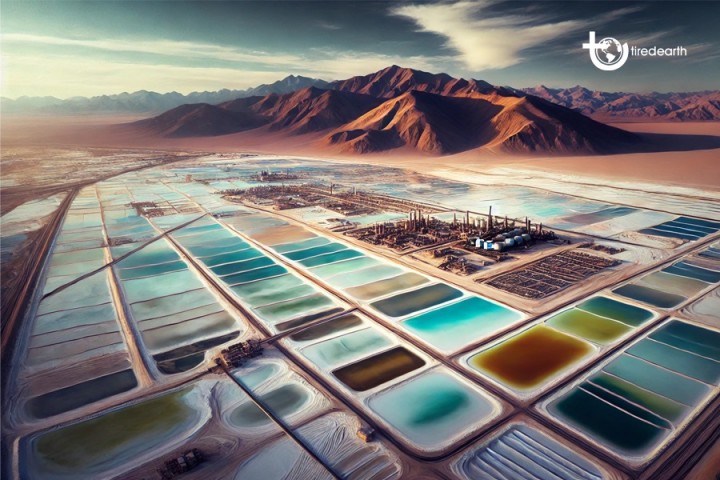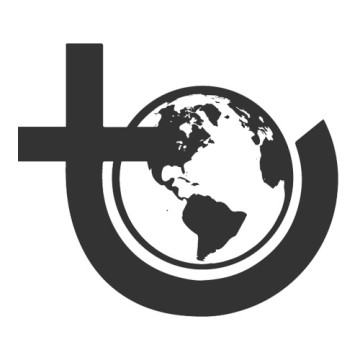France: In Search of the Lithium

Known as the “White Gold,” lithium is increasingly becoming one of the most sought-after resources by governments and major corporations. The critical role this mineral plays in battery production has led many large companies tend to invest in this sector.
In this article, we take a look at the debates surrounding the presence of enormous French corporations in the lithium projects overseas.
The Lithium Triangle
The presence of rich lithium reserves in three Latin American countries—Argentina, Chile, and Bolivia—has led to the region being dubbed the "Lithium Triangle." This area, abundant with underground lithium resources in the form of brine (i.e., underground saltwater), has attracted industrial giants from around the world, from China to France and U.S.
In what follows, we will explore the involvement of two of the largest French companies -Eramet & Imerys- in lithium extraction in Latin America.
Eramet
Eramet is a French multinational mining and metallurgical company headquartered in Paris, France. Founded in 1880 by the wealthy Rothschild family, Eramet operates globally with a focus on the extraction and processing of metals such as nickel, manganese, and lithium. The company plays a significant role in the mining industry, supplying critical raw materials for various sectors, including steel manufacturing, energy, and battery production. The involvement with critical and strategic minerals caused the French government to pay special attention to such companies. As for instance, French government officials sit on its board of directors, and the company receives financial and diplomatic support from the government. it is worth noting that the French government holds 27% shares of this corporation.
In recent years, Eramet has expanded its activities into the lithium sector, particularly in Argentina, as part of its strategy to support the growing demand for electric vehicle batteries and renewable energy technologies.
The Lithium Fever
Eramet's investment in lithium production, particularly in Argentina, marks a significant strategic shift for the company as it seeks to diversify its portfolio and tap into the growing demand for lithium, driven by the global shift towards electric vehicles (EVs) and renewable energy storage.
Step 1: Early Exploration and Acquisition (2010s)
In the early 2010s when it started exploring lithium brine deposits in the Andean region, which spans Argentina, Bolivia, and Chile. This region, known as the "Lithium Triangle," contains over half of the world's known lithium reserves.
Project Acquisition: Eramet acquired the Centenario-Ratones project in Argentina, a significant lithium brine deposit, through its subsidiary Eramine Sudamérica. This acquisition laid the foundation for its lithium operations in the region.
Step 2: Project Development (2018-2021)
Between 2018 and 2020, Eramet conducted extensive feasibility studies to assess the potential of the Centenario-Ratones project. These studies involved geological surveys, environmental impact assessments, and pilot production tests.
Step 3: Strategic Partnership with Tsingshan (2019)
In 2019, Eramet entered a partnership with Tsingshan, a Chinese stainless steel and nickel giant, to develop the lithium project. The partnership aimed to leverage Tsingshan's expertise and financial resources to accelerate the development of the mine.
Step 4: Construction Phase (2022)
Eramet officially launched the construction phase of the lithium extraction plant at the Centenario-Ratones site in early 2022. The plant is designed to produce battery-grade lithium carbonate, a critical component for EV batteries.
Step 5: Expected Production Start (2024)
Eramet aims to begin commercial production of lithium carbonate by 2024, with an expected annual production capacity of around 24,000 tons, what make it a significant player in the global lithium market.
Conserns
Despite the fact that Eramet has announced that it is looking for environmentally friendly ways to extract lithium, it still uses traditional methods which means extracting lithium from brine deposits. This involves pumping brine from underground sources to the surface, where it is then evaporated in large ponds to concentrate the lithium. The concentrated lithium is subsequently processed to produce lithium carbonate or lithium hydroxide.
The traditional extraction of lithium from the brines causes the waste of a significant part of the underground water sources in these areas. This issue becomes important when most of these areas are suffering from severe water shortage.
It should also be noted that the chemical processes used to produce lithium carbonate cause serious water and soil pollution and produce hazardous industrial waste.
Imerys
As another French corporation, Imerys is a global leader in mineral-based specialty solutions for various industries, including construction, ceramics, and pharmaceuticals. The company, headquartered in Paris, France, has diversified its portfolio over the years to include a focus on lithium mining, driven by the growing demand for lithium in battery technology and renewable energy.
Entry into Lithium:
Similar to what was said about Eramet, Imerys also began exploring opportunities in lithium mining as part of its strategy to diversify its portfolio and invest in the growing demand for electric vehicle batteries and renewable energy storage solutions.
The increasing global demand for lithium-ion batteries, driven by the shift toward electric vehicles and renewable energy technologies, prompted Imerys to invest in lithium resources. The company's goal is to secure a position in the lithium supply chain and contribute to the global transition to cleaner energy.
Lithium Projects and Operations in Latin America
Imerys has been active in Argentina, particularly in the Catamarca region, which is known for its lithium-rich brine deposits. The company has been involved in several projects aiming to explore and develop lithium resources in this area.
Imerys has also shown interest in the Cauchari-Olaroz lithium project, which is located in the Jujuy province of Argentina. This project is operated by Lithium Americas Corporation, with which Imerys has considered potential partnerships.
Extraction Methods
Similar to other corporations active in Latin America, Imerys focuses on extracting lithium from brine deposits.
Criticisms Rise
Eramet and Imerys lithium project in Argentina, part of the broader "Lithium Triangle," has sparked criticism for the potential environmental impact, particularly concerning water usage in a region that is already water-scarce.
Local environmental groups, indigenous communities, and international NGOs, such as MiningWatch Canada, Friends of the Earth, Greenpeace etc. have expressed concerns about the project’s impact on local water resources and ecosystems.
The main concern is that lithium extraction from brine can lead to the depletion of water resources, which are crucial for local communities and agriculture. There is also anxiety about the broader environmental impact on the fragile ecosystem of the Puna plateau.
Why All These Criticisms?
Lithium extraction from salt flats, such as the Centenario-Ratones project, typically involves pumping brine from underground aquifers to the surface, where it is evaporated in large ponds to extract lithium. This process is water-intensive and has raised concerns in regions like Salta, where water is a scarce and vital resource for both local communities and the environment.
Environmental activists and local indigenous groups are concerned that the large-scale extraction of brine will deplete underground water reserves, affecting the water supply for local agriculture and ecosystems. The fear is that the long-term impact could lead to desertification and the loss of traditional livelihoods dependent on water resources.
Impact On Indigenous Communities
The lithium-rich regions of Argentina, including Salta, are home to indigenous communities who rely on the land and water for their traditional way of life. The potential environmental degradation and water depletion caused by lithium mining have raised alarms about the impact on these communities.
Activists and indigenous leaders have voiced concerns that the project could disrupt local communities, leading to displacement and loss of access to essential resources. There have also been criticisms regarding the lack of sufficient consultation with indigenous communities before the project was initiated, which is a requirement under international standards like the UN Declaration on the Rights of Indigenous Peoples.
Corporations’ Strategies Evolve
In response to the concerns and criticisms raised, these corporations did not remain indifferent. To address the concerns of the local indigenous communities mentioned earlier, Eramet made efforts to alleviate these issues by involving indigenous people and creating employment opportunities for them within the company. In this way, the indigenous communities, who were at risk from lithium extraction activities, became stakeholders in Eramet.
Eramet has also announced its strong commitment to exploring alternative lithium extraction methods, such as Direct Lithium Extraction (DLE). Although this method is currently in the research and initial testing phases, its high extraction costs and the environmental impacts it generates —albeit limited—compared to traditional methods, make its widespread adoption seem unlikely and overly ambitious.

